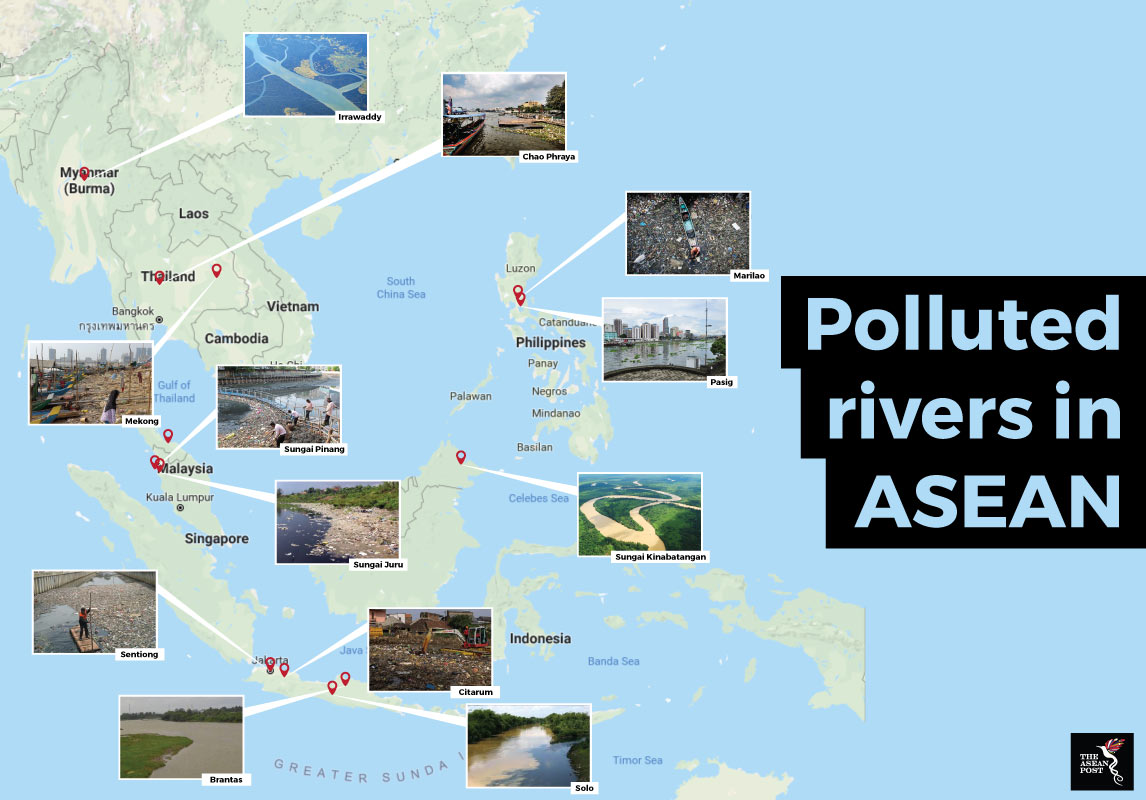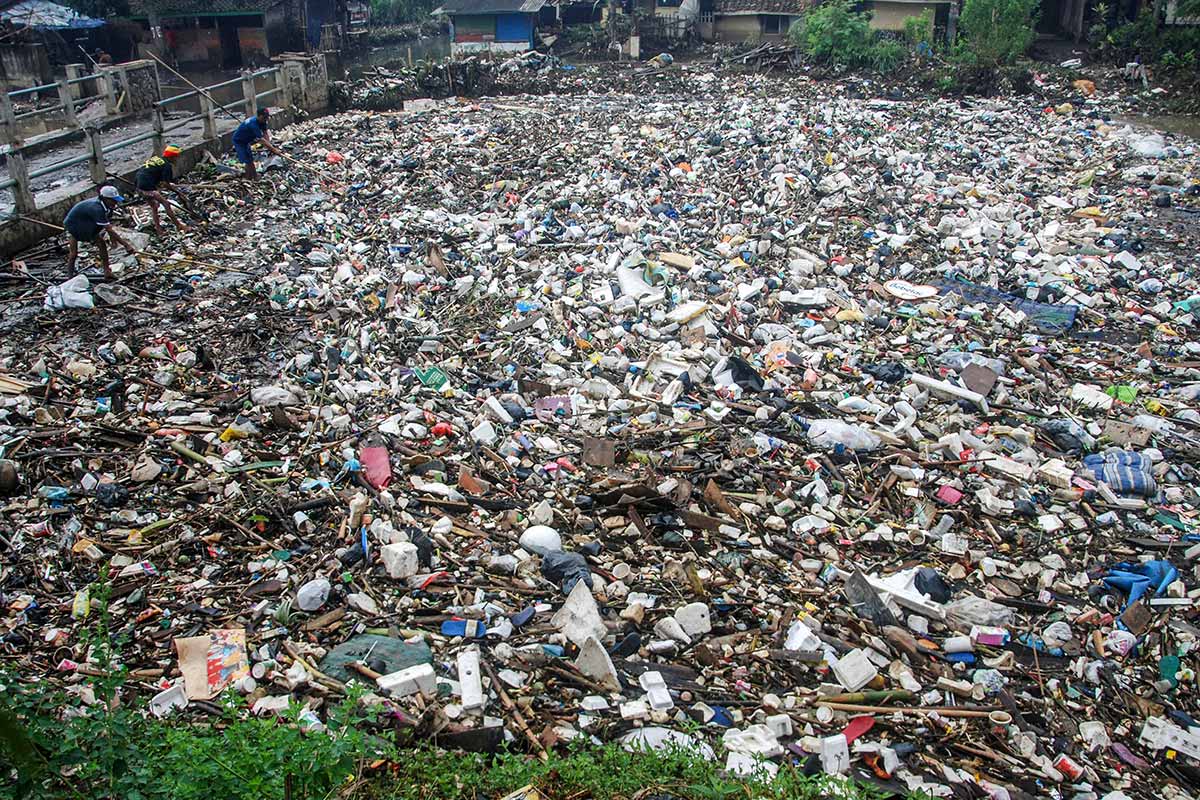With the Asian Games fast approaching, scheduled to be held from 18 August to 2 September 2018, officials in the Indonesian capital where the games are going to be hosted are scrambling in an all-out effort to prepare the host cities. Sporting venues in the Indonesian cities of Jakarta, Palembang, Bandung, Bogor, Bekasi and Subang are receiving their final touches, concrete river banks are being painted, building works are nearing completion and traffic congestion is being addressed. But for one of Jakarta’s biggest problems, the foul-smelling Sentiong river flowing near the Asian Games athletes' village in Kemayoran, officials are resorting to black nylon mesh.
About 730 metres of the river, also known to locals as Kali Item or Black River, is being covered with black nylon mesh as there is no immediate solution to the pollution in sight. With the pan-Asian sporting event looming, the black mesh is expected to camouflage the filthy river, as well as reduce the foul smell emanating from the evaporating river water. While the controversial band-aid solution is being mocked by many, for some of the people living near the river, the improvement is unmistakeable.
River pollution in Indonesia is not uncommon. Indonesia is home to one of the world’s most polluted tributaries, the Citarum River. The 300-kilometre Citarum is the source of 80 percent of the piped water for millions of people living in Bandung and Jakarta for their everyday household use. It is also the source of water for irrigating paddy fields in West Java that produce five percent of Indonesia’s rice, as well as powering the Saguling and Cirata hydropower dams. Even with such important and strategic uses, the Citarum’s water remains toxic.
The Citarum river is mostly polluted by urban effluent made worse by the ever-expanding population, and industrial discharge from the activities of more than 2,000 factories including Indonesia’s booming textile manufacturers. The hundreds of textile factories lining the river bank is the source of industrial waste which includes lead, mercury and other toxic chemicals, resulting in the death of 60 percent of the river’s fish species over the last decade. While it is mandatory for a factory to run a wastewater treatment plant for its industrial effluent, many factories in the area bypass the treatment plants and release effluent directly into the river. Household wastewater and sewerage treatment in Indonesia is almost non-existent. However, it is not just the water quality that is the problem. The river is also blighted by a sea of styrofoam and plastic bottles, wrappers and containers that has replaced traditional biodegradable packaging like banana leaves. In April 2018, the military was called in to handle iceberg-like trash accumulation that blocked the major tributary.
Citarum and Sentiong are not the only polluted rivers in the country. There are also the polluted rivers of Brantas, Solo and Progo. Indonesia is not alone in its struggle with polluted rivers choked with effluent and trash. The Philippines has its Marilao and Pasig rivers. In Malaysia, there are the Pinang, Juru and Kinabatangan rivers. Thailand has the Chao Phraya. The Mekong river, which traverses China, Myanmar, Lao PDR, Thailand, Cambodia and Vietnam is also polluted with trash, plastics and toxic waste from all six countries. In most cities, the rush toward development, results in a concentrated focus on urban “hardware” such as infrastructure and facilities and often times leaves out the “software” upgrade needed such as environmental education, personal responsibility and community agency.

Source: Various Sources
A mesh covering is not an acceptable solution for the 730 meters of the Sentiong, even as a short-term measure for the Asian Games. A coordinated effort spearheaded by the government is needed to tackle the sources of the household and industrial effluent. However, regardless of how efficient local authorities are and how robust the regulation in place, the problem of effluent and waste in rivers will not be solved as long as businesses and communities living within the river basin treat the water ways as a conveyance for waste disposal. While the authorities can institute regulations and carry out enforcement, the public too needs to undergo a shift in attitude and start respecting their rivers.
